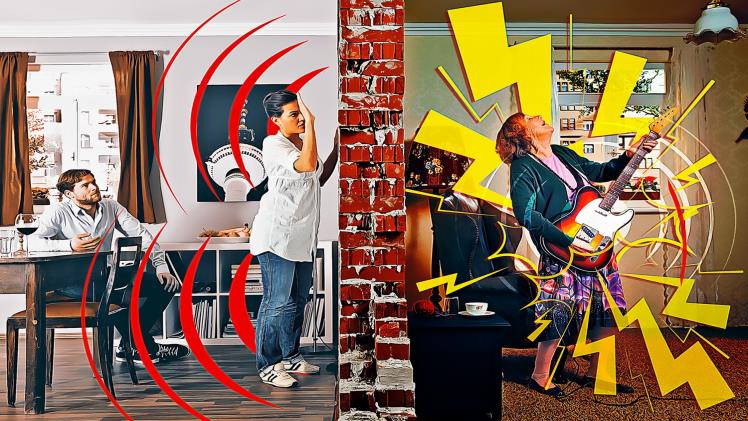In an increasingly noisy world, finding peace and quiet has become a precious commodity. The science of soundproofing, a technique to block or absorb sound, is more relevant than ever, especially in urban environments.
This article explores various materials and methods used in soundproofing, highlighting how they can help create a serene, noise-free space.
The Basics of Soundproofing Materials
Soundproofing materials work by either absorbing sound waves or reflecting them away. Absorptive materials, like foam and fibreglass, are effective in minimising sound echoes and reverberation.
On the other hand, reflective materials such as mass-loaded vinyl and perspex sheets are used to deflect sound waves, preventing them from entering a space. This dual approach ensures a significant reduction in noise levels.
Focusing on Specific Materials
- Fibreglass Insulation: Widely used in walls, ceilings, and floors, fibreglass insulation is a cost-effective method for reducing airborne noise. It absorbs sound waves, preventing them from passing through building structures.
- Acoustic Foam Panels: These panels are designed to reduce echo and background noise. They are typically used in recording studios and home theatres to enhance sound quality.
- Mass-Loaded Vinyl (MLV): A heavy yet flexible material, MLV is excellent for blocking sound transmission. It’s often used in construction projects where soundproofing is a priority.
- Perspex Sheets: Though not traditionally used for soundproofing, a perspex sheet can reflect sound waves, making it a useful material in certain situations. Transparency also allows for aesthetic designs without compromising on light.
- Soundproofing Curtains and Carpets: These materials help absorb sound in a room, reducing the transmission of noise from outside sources. They are an easy and decorative solution for immediate soundproofing needs.
Innovations in Soundproofing Technology
Advancements in technology have led to the development of new soundproofing materials. One such innovation is soundproof paint, a thick, water-based solution that can be applied to walls and ceilings to dampen noise. Additionally, acoustic sealants are used to fill gaps and cracks in walls, preventing sound leaks.
Installing Soundproofing Materials: DIY or Professional?
While some soundproofing projects can be DIY, such as installing acoustic foam panels or curtains, others might require professional expertise. Installing materials like MLV or fibreglass insulation often involves more complex procedures, where professional installation ensures effectiveness and safety.
Choosing the Right Materials for Your Space
When selecting soundproofing materials, consider factors like the type of noise (airborne or impact), the location of the noise source, and the specific requirements of the space. Consulting with a soundproofing professional can provide tailored solutions for your needs.
The Silent Sanctuary: Achieving Peace Through Soundproofing
In conclusion, the journey to a quieter environment is a blend of the right materials and techniques.
From the utilisation of traditional materials like fibreglass insulation to innovative solutions like soundproof paint, the options are vast and varied. The key lies in understanding the specific needs of your space and choosing materials that align with those requirements.
In doing so, you can transform any area into a haven of tranquillity, where the sound of silence isn’t just a dream but a reality.

